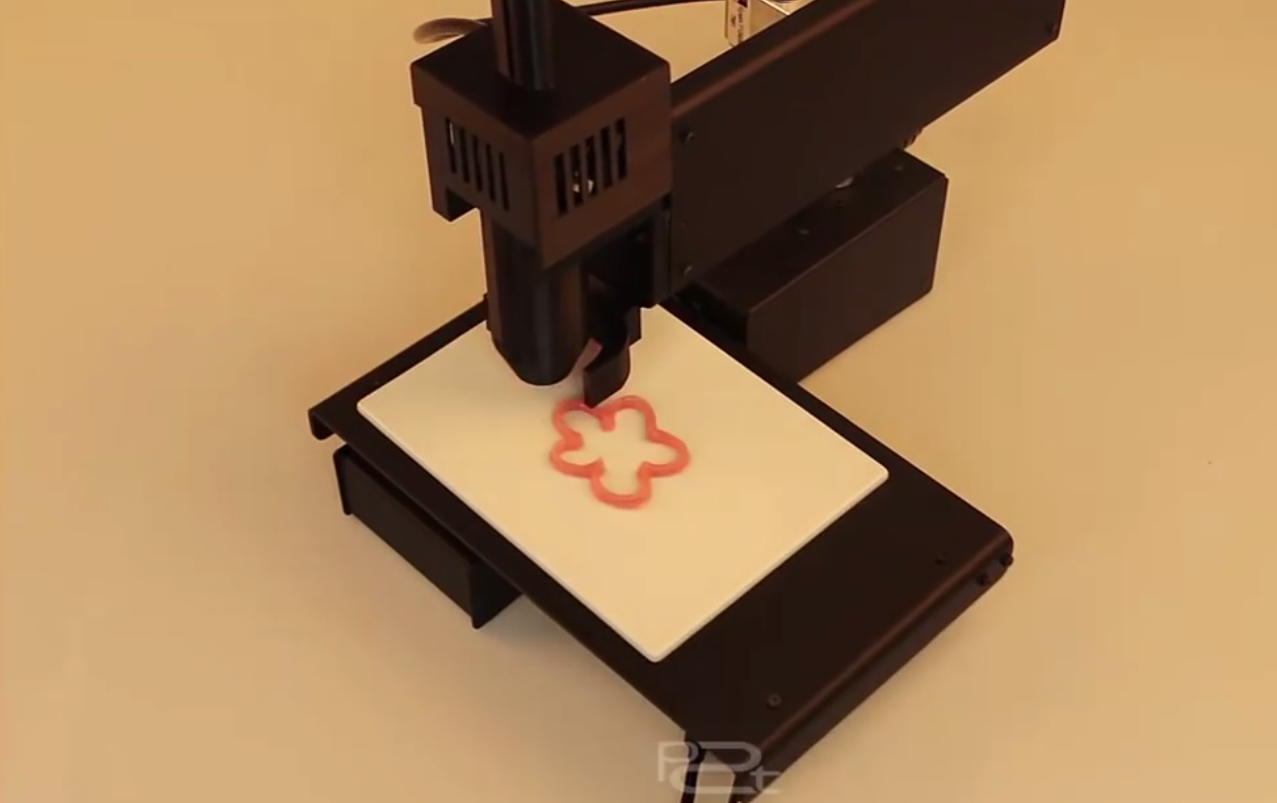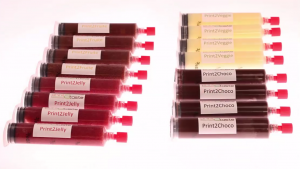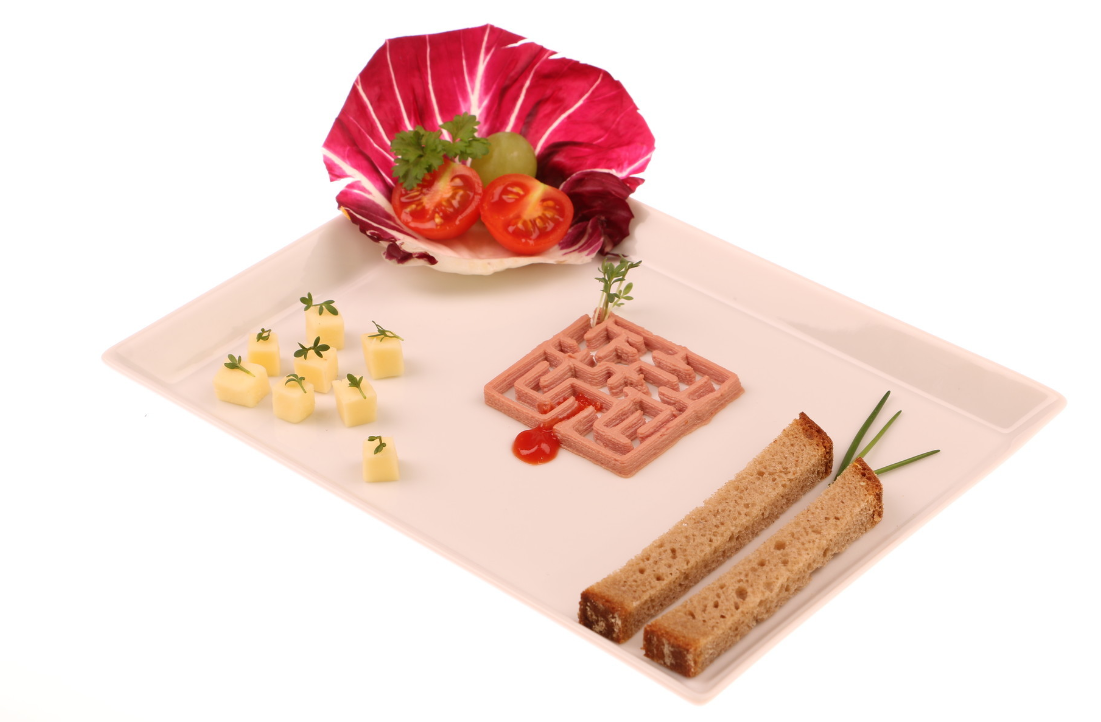 3D printable food is one of those things that sounds like a good idea, but the more you think about what is involved the sillier it becomes. Yes, the ability to 3D print identical food creations with a robot is pretty cool, but it is also rather inefficient in comparison to a skilled workforce. Since the very few food 3D printers that have actually managed to come to market are all based on FDM technology, the limitations of speed and resolution aren’t going to go away.
3D printable food is one of those things that sounds like a good idea, but the more you think about what is involved the sillier it becomes. Yes, the ability to 3D print identical food creations with a robot is pretty cool, but it is also rather inefficient in comparison to a skilled workforce. Since the very few food 3D printers that have actually managed to come to market are all based on FDM technology, the limitations of speed and resolution aren’t going to go away.
Additionally, the few food printers that exist tend to be capable of printing in only a select few materials, and require an investment into specific 3D printers with a singular purpose. So if you buy a food 3D printer all that you can print with it is going to be food. When you’re investing several hundred dollars into an appliance that only has one specific purpose, the practicality of it starts to diminish pretty quickly.
The reality is, a successful restaurant probably isn’t going to purchase a machine that is slow and inefficient in comparison to their staff. Your typical home 3D printer owner probably isn’t going to purchase a machine for the two or three times a year that they would make fancy desserts with it. So who exactly are food 3D printers being aimed at?
 But a new German startup called Print2Taste may have actually come up with a way to sell food 3D printers and manage to make it worthwhile. Rather than focusing on an entire 3D printer, they cooked up the Bocusini. They will sell a complete kit of course, but frankly I think that will be as dead in the water as all of the other food 3D printers.
But a new German startup called Print2Taste may have actually come up with a way to sell food 3D printers and manage to make it worthwhile. Rather than focusing on an entire 3D printer, they cooked up the Bocusini. They will sell a complete kit of course, but frankly I think that will be as dead in the water as all of the other food 3D printers.
However, they will also be offering retrofit kits for open-source 3D printer platforms. Currently they will offer retrofit kits for the Printrbot Simple, Ultimaker 2, and Printrbot Metal. Rather than s pend hundreds of dollars on a machine that can do one thing, you can buy a peripheral that can be attached to your existing 3D printer and expand what it is capable of doing in your home. And the entire thing is controlled via a WiFi connection from your smart phone, tablet, or computer.
pend hundreds of dollars on a machine that can do one thing, you can buy a peripheral that can be attached to your existing 3D printer and expand what it is capable of doing in your home. And the entire thing is controlled via a WiFi connection from your smart phone, tablet, or computer.
But Print2Taste isn’t just in the hardware business. They have spent years developing specific types of foods and optimized their textures to make them ideal for 3D printing. They have settled on dozens of specific food recipes that they say have all the taste required of high-end cuisine and the correct consistency for accurate 3D printing. They can either help their customers develop 3D printable food to match their needs and food style, or they can sell their pre-existing recipes to them.
 The various 3D printable food types that they have developed are pretty comprehensive and cover a wide range of food types. The reloadable food capsules that are loaded into the food extruder can contain anything from cookie dough, chocolate, and jelly, to vegetable paste, mashed potatoes, and even liver pâté. And that is only their first round of offerings. I could see anything from ice cream to raw meat being easily inserted into the Print2Tase food capsules and printed.
The various 3D printable food types that they have developed are pretty comprehensive and cover a wide range of food types. The reloadable food capsules that are loaded into the food extruder can contain anything from cookie dough, chocolate, and jelly, to vegetable paste, mashed potatoes, and even liver pâté. And that is only their first round of offerings. I could see anything from ice cream to raw meat being easily inserted into the Print2Tase food capsules and printed.
Unfortunately, as with most 3D printing technology, Print2Taste’s Bocusini is not yet available for purchase–but they are readying a Kickstarter campaign set to launch May 12th. So far there hasn’t been any information released about pricing.
 I’m still on the fence with the whole 3D printing food thing.
I’m still on the fence with the whole 3D printing food thing.
Yes, mashed potato castles are way cool, but you can do the same thing with a simple mold. Yes, flower shaped jelly things are neat, but again, a skilled pastry chef can do the same thing considerably faster. And while a liver pâté maze is neat to look at…okay, I can’t think of anything bad to say about a meat maze, that’s pretty cool.
But as cool as some of these things are, the value is entirely dependent on the price point of the complete kit and the retrofit kits.
 Once the Kickstarter launches in a few weeks we will make sure that we check back with the full details and pricing structure.
Once the Kickstarter launches in a few weeks we will make sure that we check back with the full details and pricing structure.
So what do you think, is food 3D printing just a waste of time and money, or are there real world applications for it? Tell us what you think over on The First Universal Food 3D Printer forum thread at 3DPB.com.
Subscribe to Our Email Newsletter
Stay up-to-date on all the latest news from the 3D printing industry and receive information and offers from third party vendors.
You May Also Like
3D Printing Financials: Fathom Struggles in Financial Quicksand During Critical Transition
Facing a year of key transitions and financial pressures, Fathom (Nasdaq: FTHM) has filed its annual report for 2023 with the U.S. Securities and Exchange Commission (SEC). The document outlines...
Latest Earnings Overview for Australian 3D Printing Firms Titomic and AML3D
Australian 3D printing manufacturing firms Titomic (ASX: TTT) and AML3D (ASX: AL3) reported their financial results for the period from July to December 2023, marking the first half of their...
3D Printing Webinar and Event Roundup: April 7, 2024
Webinars and events in the 3D printing industry are picking back up this week! Sea-Air-Space is coming to Maryland, and SAE International is sponsoring a 3D Systems webinar about 3D...
3D Printing Financials: Unpacking Farsoon and BLT’s 2023 Performance
In the Chinese 3D printing industry, two companies, Farsoon (SHA: 688433) and Bright Laser Technologies, or BLT (SHA: 688333), have recently unveiled their full-year earnings for 2023. Farsoon reported increases...































